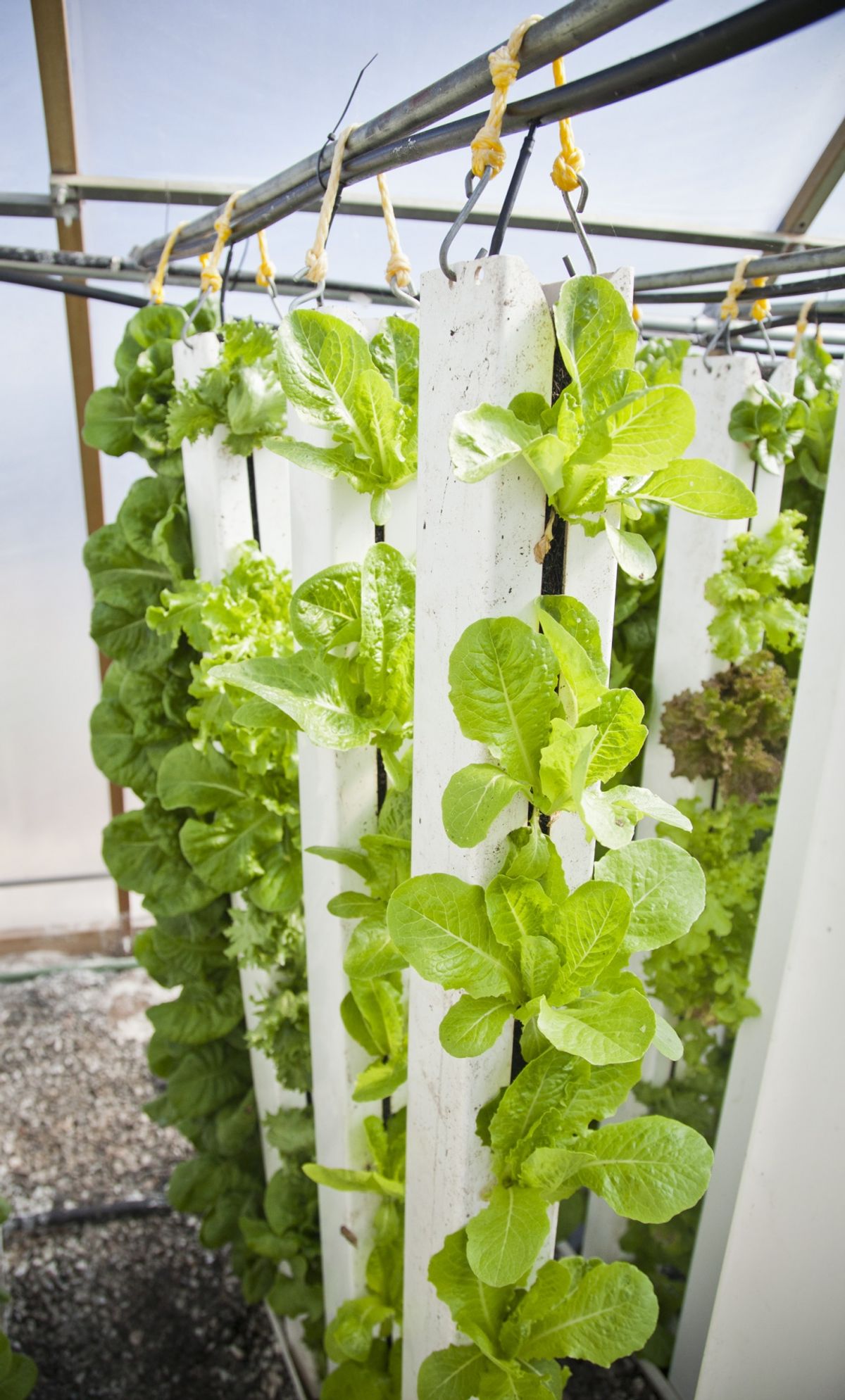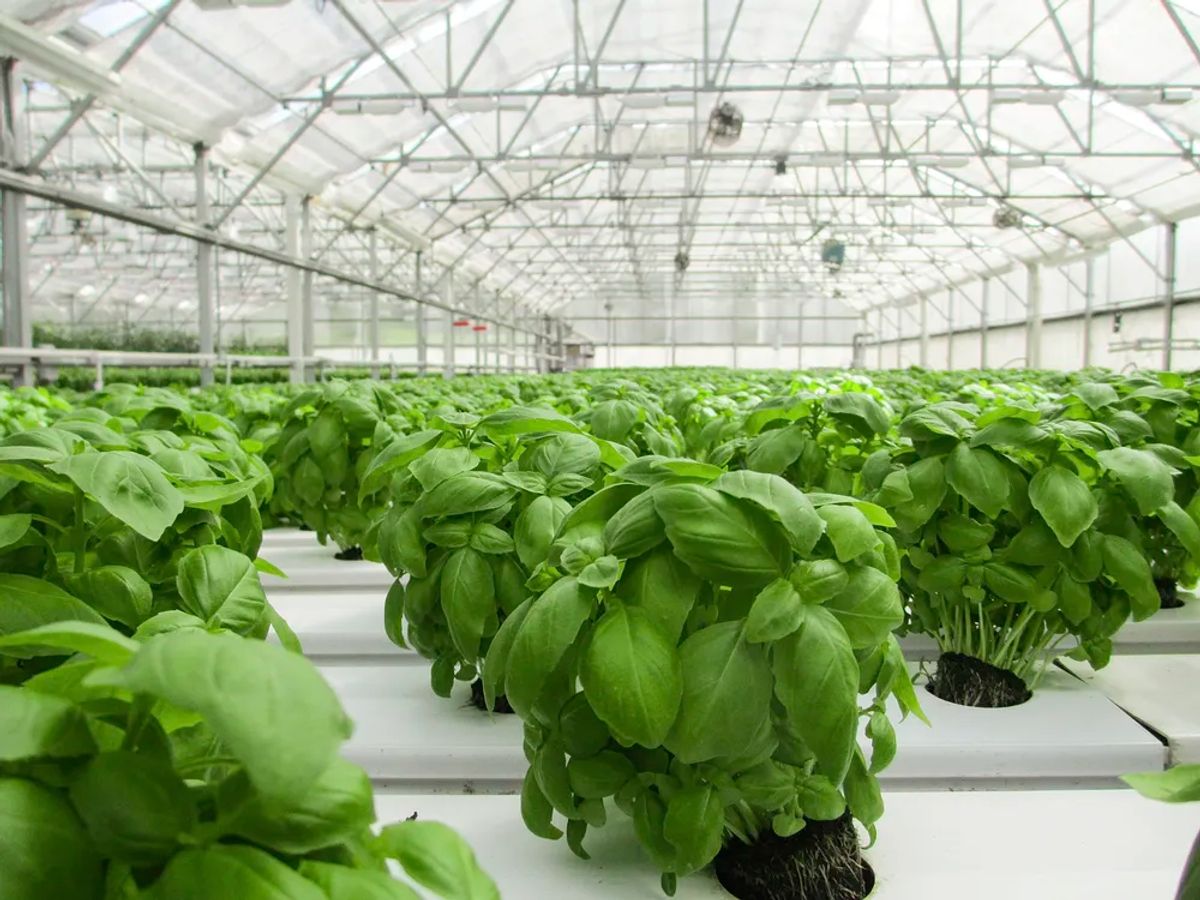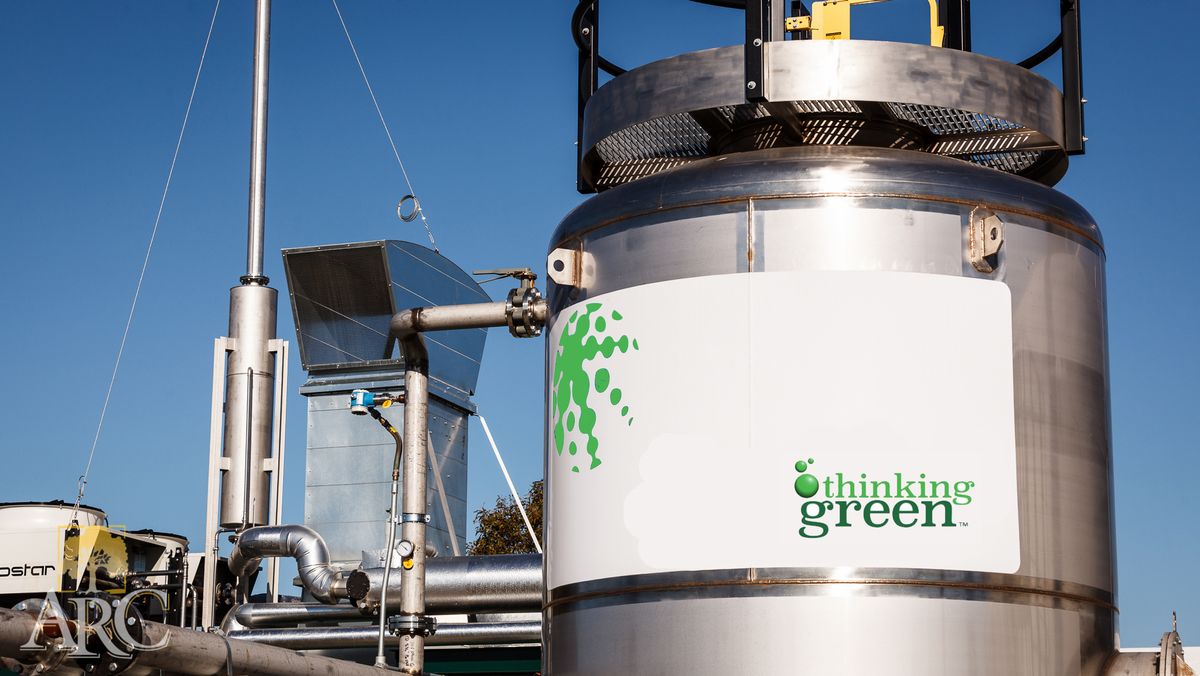As we stand on the precipice of 2024, agriculture is undergoing a profound transformation, with vertical farming emerging as a beacon of innovation and sustainability. This cutting-edge approach to cultivation is not just an alternative to traditional farming methods; it is a revolutionary step forward, integrating seamlessly into urban landscapes, leveraging technological advancements, and promising a more sustainable and secure food future.
In this article, we delve into the multifaceted world of vertical farming, exploring its rise in urban settings, the technological breakthroughs propelling it, its environmental impacts, economic implications, and its pivotal role in addressing global food security.
Table of Contents
Key Takeaways
- Vertical farming is transforming urban landscapes by bringing agriculture into the heart of cities, particularly in Asia where space is at a premium.
- Technological advancements such as hydroponics, aeroponics, and AI are the driving forces behind the efficiency and scalability of vertical farms.
- Environmental benefits of vertical farming include significant water conservation, reduced carbon footprint, and the promotion of biodiversity.
- Economic analysis shows vertical farming to be increasingly viable, with growing consumer demand for locally grown produce and rising investment in the sector.
- Vertical farming is poised to play a crucial role in achieving food security sustainably, necessitating supportive policies, regulation, and education of new urban farmers.
The Rise of Vertical Farming in Urban Landscapes

Integrating Agriculture into the Urban Fabric
The visionary integration of vertical farming into urban master planning posits a future where these farms are seamlessly woven into the urban landscape, enhancing food security, environmental sustainability, and community welfare. By incorporating vertical farms into residential and commercial developments, this approach not only optimizes land use but also redefines the relationship between urban populations and their food sources.
The journey of vertical farming is far from concluded; it stands on the threshold of its next evolutionary leap, promising to reinvent our urban agriculture.
Projects such as the LCK initiative in Singapore, NEOM in Saudi Arabia, and the Bronx armory redevelopment in the U.S. illustrate the potential of integrating vertical farming into the broader context of architecture, planning, and real estate development. One notable example of geolocation-driven vertical farming innovation is the concept of “smart farms.” These farms are equipped with various sensor technologies, paving the way for a more efficient and intricately integrated agricultural presence in our urban existence.
Challenges and Opportunities in Asian Cities
In the bustling urban centers of Asia, where space is at a premium, vertical farming offers a highly efficient solution to the challenges of traditional agriculture. The key benefits of vertical farming in urban Asian real estate lie in its sustainability and efficiency. This method uses up to 95% less water than traditional farming methods, addressing a critical resource challenge in many Asian cities.
However, the integration of vertical farms into the urban fabric is not without its hurdles. Issues such as high initial costs, technological complexity, and the need for skilled labor present significant challenges. Yet, these are counterbalanced by the opportunities for innovation, community engagement, and the potential to revitalize underutilized spaces.
The adaptability of vertical farming to small and unconventional spaces, like the Clementi Avenue 1 residences in Singapore, exemplifies its potential to transform urban landscapes. As Asian cities continue to expand, the scalability of vertical farms could play a crucial role in meeting the increasing demand for fresh produce.
The following list highlights some of the key challenges and opportunities that vertical farming faces in Asian cities:
- High initial investment and operational costs
- Technological advancements leading to cost reductions
- Skilled workforce development
- Community involvement and education
- Policy support and urban planning integration
Case Studies: Success Stories from the East
The ascent of vertical farming in Asia is marked by pioneering ventures that have turned urban challenges into agricultural triumphs. China’s towering achievement, the world’s tallest unmanned vertical farm, stands as a testament to this innovative spirit. Located in Sichuan province, this facility showcases the remarkable potential of vertical farming to thrive in densely populated areas while addressing food security concerns.
In the realm of sustainability and efficiency, vertical farms in urban settings are not just a concept but a reality with tangible benefits. These projects demonstrate economic viability coupled with environmental stewardship, setting a precedent for future developments in the sector.
The sustainability of vertical farming hinges on its ability to address specific challenges with clear economic benefits.
Here are a few key benefits identified in successful case studies from the East:
- Integration with existing urban infrastructure
- Significant reductions in water usage and waste
- Localized food production reducing transportation emissions
- Year-round crop production irrespective of external climate conditions
Technological Innovations Driving Vertical Farming

Advancements in Hydroponics and Aeroponics
The landscape of vertical farming is being transformed by significant advancements in hydroponics and aeroponics, enabling crops to thrive without traditional soil. These technologies are pivotal in reducing the environmental footprint of agriculture by minimizing water and land use.
Hydroponic systems circulate nutrient-rich water directly to plant roots, while aeroponic systems mist the roots with nutrients, allowing for greater oxygen exposure and nutrient absorption. The efficiency of these methods is evident in the data:
| Method | Water Usage Reduction | Land Usage Reduction |
|---|---|---|
| Hydroponics | Up to 98% | 99% |
| Aeroponics | Up to 94% | Not specified |
The integration of precise LED lighting with these soil-less farming techniques has further optimized plant growth, leading to year-round crop production regardless of external climate conditions.
The continuous evolution of these systems promises to enhance the sustainability and productivity of vertical farms, making them a cornerstone in the future of urban agriculture.
LED Lighting and Energy Efficiency Breakthroughs
The evolution of LED lighting has been pivotal in enhancing the energy efficiency of vertical farms. Advanced LED technologies now emulate natural sunlight, optimizing plant growth while significantly reducing energy consumption. This breakthrough has been a game-changer, especially in urban settings where sustainability and efficiency are paramount.
Despite the progress, energy costs remain a substantial part of operational expenses, as evidenced by the recent closures of vertical farms in Europe due to surging energy prices. However, innovations continue to emerge, such as Square Roots’ research on crop growth without light, showcasing the untapped potential for energy conservation in vertical farming.
Advances in climate control systems complement LED innovations, together driving forward the controlled environment farming sector. By refining these technologies, vertical farms can not only cut down on energy use but also contribute to a more sustainable urban agriculture landscape.
The table below summarizes the impact of LED lighting advancements on energy consumption and cost-effectiveness in vertical farming:
| Aspect | Pre-LED Era | Post-LED Advancements |
|---|---|---|
| Energy Consumption | High | Reduced |
| Cost-Effectiveness | Low | Improved |
| Crop Growth Quality | Inconsistent | Enhanced |
| Sustainability | Limited | Increased |
Automation and AI in Crop Management
The integration of automation and artificial intelligence (AI) is transforming the landscape of vertical farming. Robotics and automation are revolutionizing labor-intensive tasks, such as planting, harvesting, and sorting. With the advent of autonomous tractors, drones, and robotic arms, farms are witnessing a surge in efficiency and a reduction in labor costs.
Precision agriculture, powered by AI and machine learning, leverages big data analytics to optimize farming operations. Advanced sensors and satellite imagery provide invaluable real-time data on various aspects of crop management, from soil moisture to pest infestations.
Despite the potential, the adoption of autonomy and robotics in agriculture has been slow. A 2022 McKinsey report highlighted that only a small fraction of farmers globally have embraced these technologies. However, the trend is changing, and 2024 is seeing an increase in the use of these innovative solutions.
Indoor farms are increasingly reliant on a combination of robotics, machine learning, and cloud computing. These technologies are essential for creating an optimized growing environment and reducing manual labor.
The table below summarizes the key components of automation technologies in vertical farming:
| Technology | Function |
|---|---|
| Robotics | Planting, harvesting, weeding |
| AI & Machine Learning | Data analysis, crop monitoring |
| IoT Sensors | Environmental control |
| Cloud Computing | Data storage and access |
Sustainability and Environmental Impact

Water Conservation and Recycling in Vertical Farms
Vertical farming is revolutionizing the way we think about water usage in agriculture. By employing innovative techniques such as rainwater harvesting and graywater recycling, these farms are setting new standards for water efficiency. AeroFarms, a leader in the industry, boasts up to a 94% reduction in water usage, a critical achievement in an era where water scarcity is becoming an increasingly pressing issue worldwide.
The transformative approach of vertical farming not only optimizes space usage and crop yield but also significantly reduces the consumption of resources. For instance, water usage can be reduced by 70 to 95 percent, and land use by over 90 percent. This not only alleviates pressure on local ecosystems but also fosters biodiversity and protects endangered species.
In densely populated urban areas, where land is scarce and water is precious, vertical farming emerges as a sustainable and efficient solution. It aligns with the needs of urban dwellers and offers a beacon of hope for a more sustainable and efficient approach to crop production.
The table below highlights the remarkable efficiency gains in water usage by vertical farming compared to traditional methods:
| Method | Water Usage Reduction |
|---|---|
| Traditional Farming | – |
| Vertical Farming | 70-95% |
By drastically reducing water and land usage, vertical farming is not just a popular choice but a necessary step towards a sustainable future in agriculture.
Reducing the Carbon Footprint of Food Production
Vertical farming presents a compelling solution to the pressing issue of climate change, particularly in the context of food production. By bringing farms into urban environments, farmers can overcome geographical limitations, extend growing seasons, and minimize water usage, pesticides, and transportation emissions. This not only results in fresher, healthier food options for consumers but also contributes significantly to the sustainability of our food systems.
The innovative concept of vertical farming offers a transformative approach to agricultural practices, significantly reducing the consumption of resources and fostering biodiversity.
The ReFarm project at Cop28 in Dubai exemplifies the circularity achievable with vertical farming. Unlike conventional linear models, ReFarm operates on a circular system, processing food waste into compost and water through the action of black soldier flies, supporting the growth of fresh greens and herbs. This model showcases how vertical farms can be self-sustaining ecosystems, further reducing their carbon footprint.
Sustainable practices in vertical farming, such as those implemented in warehouse farmlands, make agriculture more efficient. Here’s a brief overview of the benefits:
- Reduced reliance on soil and water, leading to less natural resource consumption.
- Cultivation of crops in urban areas, cutting down on transportation costs and emissions.
- Elimination of toxic chemicals and pesticides, preventing greenhouse gas emissions.
Additionally, some vertical farms focus on cultivating rare plant species threatened by climate change, aiding in reforestation efforts and demonstrating the technology’s potential impact beyond conventional agriculture.
Biodiversity and Ecosystem Services
Vertical farming holds the promise of enhancing biodiversity by providing alternative habitats for various species and reducing the pressure on natural ecosystems. The integration of vertical farms into urban landscapes can mitigate the effects of habitat loss, especially in densely populated areas. This efficient use of resources caters to the needs of urban dwellers and aligns with the growing global emphasis on sustainable and environmentally friendly practices.
Vertical farms have the potential to contribute to climate change mitigation by cultivating rare plant species threatened by climate change or aiding reforestation efforts, thus extending their impact beyond traditional agricultural boundaries.
The table below summarizes the ecosystem services provided by vertical farming:
| Service Type | Description |
|---|---|
| Habitat Creation | Provides space for flora and fauna, potentially increasing urban biodiversity. |
| Air Quality Improvement | Plants in vertical farms can absorb pollutants, improving urban air quality. |
| Climate Regulation | Contribution to urban cooling and carbon sequestration. |
| Water Regulation | Efficient water use and recycling reduce the strain on urban water resources. |
Economic Viability and Market Trends

Cost Analysis and Profitability of Vertical Farms
The economic landscape of vertical farming is rapidly evolving. With the global vertical farming market size expected to reach $17.32 Bn by 2028, growing at a rate of 22.1%, investors and entrepreneurs are keenly observing the profitability trends in this sector. The shift from traditional to vertical farming is not just a technological leap but also a financial strategy that promises higher yields and resilience against climate adversities.
Vertical farms can yield up to ten times more produce for certain crops compared to traditional methods. This significant increase in productivity, coupled with the reduction in crop loss due to adverse weather, positions vertical farming as a financially attractive alternative. However, the initial investment remains a considerable challenge, with costs associated with acquiring advanced equipment and training or hiring skilled personnel.
Economies of scale play a crucial role in the profitability of vertical farms. As operations scale up, the cost per unit of produce decreases, enhancing the potential for higher profit margins.
Understanding the economic benefits and challenges is essential for stakeholders in the vertical farming industry. Aligning the innovative solutions of vertical farming with its economic advantages is key to ensuring its long-term viability and success.
Consumer Demand for Locally Grown Produce
The consumer appetite for locally-sourced food has been a driving force behind the growth of vertical farming. The market for vertical farming is projected to reach USD 25568.95 Million by 2030, reflecting a growing preference for produce that is not only fresh but also has a lower environmental impact. This trend is particularly evident in the demand for organic and local produce, which has become a significant factor in the expansion of vertical farms.
Local vertical farms, like GrowUp Farms, offer produce that is available year-round, circumventing the constraints of traditional growing seasons. This not only guarantees freshness but also cuts down on the carbon footprint from food transportation. In regions like Canada, where price spikes in leafy greens have occurred, vertical farming operations such as Fieldless Farms are becoming increasingly favored.
- Enhanced supply chains have emerged as a key benefit of vertical farming, with improved logistics and reduced reliance on long-distance transportation.
- Food security policies, such as Singapore’s goal for 30% local food production by 2030, highlight the strategic importance of vertical farming in national agendas.
By leveraging controlled environments, farmers can overcome geographical limitations, extend growing seasons, and minimize water usage, pesticides, and transportation emissions. This results in fresher, healthier, and more sustainable food options for consumers.
Investment and Funding in Vertical Farming Startups
The landscape of investment in vertical farming startups is undergoing a significant transformation. Agtech funding is rebounding, with a shift in focus from traditional vertical farming to the integration of artificial intelligence and other innovative technologies. This pivot is indicative of a broader trend within the venture capital community, which is now prioritizing startups that offer novel solutions to agricultural challenges.
Despite the high initial investment required for vertical farming, which includes the cost of equipment and the need for skilled labor or advanced automation, the sector continues to attract attention. Entrepreneurs and investors are recognizing the importance of returning to foundational principles, such as identifying the specific problems vertical farming addresses and the economic value it provides over conventional methods.
The critical challenge for startups lies in learning from past mistakes and steering towards a sustainable and economically viable future.
Innovation remains a key driver for investment, with new ventures emerging even amidst the sector’s downturn. These startups are exploring energy solutions and business models that could potentially reignite interest and investment in vertical farming. The table below highlights recent investment trends:
| Year | Investment in Vertical Farming | Notable Startups |
|---|---|---|
| 2023 | $500 million | GreenTech Inc. |
| 2024 | $750 million | AgriFuture Ltd. |
As the industry moves forward, it is essential to focus on sustainability and clear economic benefits to ensure the long-term success of vertical farming ventures.
The Future of Food Security with Vertical Farming

Meeting the Global Food Demand Sustainably
As the world’s population continues to soar, vertical farming stands as a beacon of hope for meeting the global food demand sustainably. By leveraging the vertical dimension, these farms can produce significantly more food per square meter than traditional agriculture, making them a key player in the fight against hunger.
Vertical farming is not just about producing more food; it’s about doing so responsibly. In controlled environments, farmers can overcome geographical limitations, extend growing seasons, and minimize water usage, pesticides, and transportation emissions. This results in fresher, healthier, and more sustainable food options for consumers.
The potential for vertical farming to contribute to food security, especially in urban areas where space is limited and traditional farming is not feasible, is immense.
The table below outlines the comparative advantages of vertical farming over traditional methods:
| Aspect | Traditional Farming | Vertical Farming |
|---|---|---|
| Space Utilization | Low | High |
| Resource Consumption | High | Low |
| Production Consistency | Variable | High |
| Environmental Impact | High | Reduced |
The groundwork for what could be a major shift in how societies approach agriculture is being laid today. With the right policies and support, vertical farming can help ensure a food-secure future while aligning with global goals to combat climate change.
The Role of Policy and Regulation
The legal and regulatory framework is pivotal in shaping the trajectory of vertical farming. Policies that incentivize innovation and sustainability can significantly accelerate the adoption of vertical farming technologies. For instance, Singapore’s food security policies underscore the importance of local food production, setting an ambitious goal of 30% self-sufficiency by 2030. This target is unattainable without integrating vertical farming into the nation’s agricultural strategy.
The harmonization of regulations across jurisdictions is essential to navigate the challenges of food waste and promote the environmental benefits of vertical farming.
Biotechnology and genetic engineering are at the forefront of agricultural innovation, with CRISPR technology enabling crops to be genetically tailored for urban farming needs. These advancements are crucial for the development of vertical farming, yet they require a supportive policy environment to thrive and contribute to food security and climate change mitigation.
Educating the Next Generation of Urban Farmers
As vertical farming takes root in the urban landscape, the importance of educating the next generation of urban farmers becomes paramount. These individuals will be at the forefront of agriculture innovation, blending traditional farming knowledge with cutting-edge technology.
To ensure a steady growth in this sector, educational programs must focus on a range of skills:
- Understanding of hydroponic and aeroponic systems
- Mastery of climate control and LED lighting
- Business acumen for running a vertical farm
- Knowledge of sustainable practices and resource management
By instilling a deep appreciation for the intricacies of vertical farming, we can cultivate a workforce that is not only technically proficient but also environmentally conscious.
The success stories from GrowUp Farms highlight the potential for vertical farming to revolutionize food production. It is essential that we integrate such real-world examples into the curriculum, providing students with a clear vision of what they can achieve. The Urban Agriculture initiative by the Natural Resources Conservation Service – USDA is a testament to the growing recognition of vertical farming’s role in sustainable development.
You may also like: Don’t forget to support us with a comment
Sustainable Agriculture and Modern Agronomic Techniques
Agronomy and Climate Change: Adapting Crop Production to Environmental Challenges



Thanks, I love the ideas